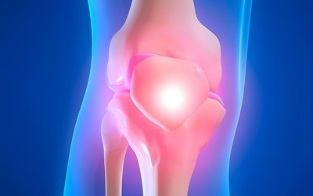
In the group of degenerative-dystrophic musculoskeletal disorders, knee joint gonarthrosis leads to the leading position.
Gonarthrosis or arthrosis of the knee joint is a disease that is accompanied by the slow destruction of cartilage tissue in the joint, involving the entire joint in the pathological process, including the ligaments, synovium, subchondral bone, and other elements of the joint.
Various factors such as infectious diseases (colds, flu, typhoid, tuberculosis, syphilis, tonsillitis and others), injuries, functional congestion of the joint (e. g. in athletes, heavy physical workers, ballet dancers) damage the knee to the knee(nutrition), as a result of which the cartilage thins and is destroyed, sometimes until its complete disappearance.
Who is in danger? First, the risk of arthrosis of the knee joint in women over the age of forty is "searched for" twice as often in them as in the strong half of humanity. Moreover, the risk increases in women who are overweight or obese.
But gonarthrosis is usually a disease of the elderly. And there is a simple explanation for this. As you know, cartilage tissue is made up of about 70-80% water, thanks to which it is well absorbed. In addition, at a young age, the "restorative" chondrocytes of the cells work actively. As we age, the amount of moisture begins to decrease and therefore the ability to cushion the joint deteriorates, the cartilage dries out, becomes brittle and cracked, and existing chondrocytes do not have time to repair damage. In many ways, this explains the incidence of knee joint gonarthrosis.
Causes of the disease
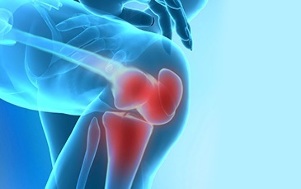
Predisposing factors include obesity, physical inactivity, chronic joint injuries or systemic microtrauma, alcohol consumption, chronic stress, past or present diseases of the knee joint, such as:
- knee inflammation,
- twitching, partial or complete rupture of tapes,
- Intra-articular fracture of femur or tibia
- Metabolic disorders such as gout and many other pathological conditions.
Quite often it is not possible to determine a single specific cause of knee joint gonarthrosis, in this case they speak of a combined cause, i. e. gonarthrosis was the result of several diseases at the same time.
The disease is usually divided into two forms for reasons of occurrence: primary and secondary.
Primary osteoarthritis is caused by age and related factors such as:
- Professional inclination,
- Overweight,
- Obesity,
- Varicose veins in the lower limbs.
Secondary gonarthrosis can be caused by a previous knee injury (fracture, rupture of the ligament) called post-traumatic arthrosis of the knee joint. The same cause may be a previous infectious disease or inflammation of the knee joint.
Symptoms
Signs of osteoarthritis of the knee joint do not appear overnight, the disease develops gradually and often takes months or even years. Constant and increasing pain with physical activity - walking, running, descending or climbing stairs, etc. - come to the fore. Another symptom of the disease is the presence of crepitus in the joint, which may crack or crack in the knee.
Very common manifestations of gonarthrosis are:
- increase in local temperature (joint is hot to the touch) or general,
- Presence of joint swelling,
- Volume up,
- difficulty moving,
- is the deformity of the joint and then the curvature of the limb.
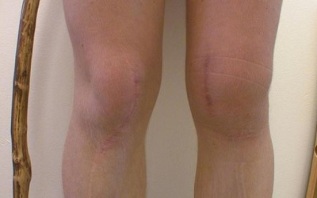
As the disease progresses, when the cartilage tissue is completely destroyed, the body has no choice but to start defending itself. This is manifested by the proliferation of bone tissue in the bones that make up the joint in the form of "thorns" (osteophytes), a deforming arthrosis of the knee joint. Excretion appears in the joint cavities.
Depending on the size of the osteophytes and the degree of deformity, several degrees of gonarthrosis are distinguished:
- Grade 1 gonarthrosis.Patients feel stiffness and mild joint pain while sitting or standing in the morning or for long periods of time. At this stage, there is no deformation in the joint, mobility is fully maintained. An X-ray reveals a small osteophyte.
- Grade 2 gonarthrosis.Painful feelings occur not only in the morning but also after prolonged exertion, the joint is deformed, the joint surfaces enlarge, as a result of which the volume of the joint also increases, bending during heavy, crunching movements. The x-ray shows a pronounced osteophyte, the joint space does not change.
- Grade 3 gonarthrosis.Manifestations are the same as the second degree, only the symptoms become more pronounced. The pain is constant, not at rest or during sleep. The function of the joint is almost completely lost, and the patients are unable to bend or straighten their legs. As a result, lameness occurs, movement is only possible with a crutch or external help. There is a pronounced deformation of the knee joint. A slight narrowing of the joint space is determined by X-ray.
- There is also a fourth stagein which there is complete immobility in the affected joint with additional immobility. X-rays determine the phenomena of subchondral bone sclerosis and significant narrowing of the joint space.
Treatment of knee arthrosis
To get good results from your treatment, you should seek the help of a qualified rheumatologist and, if he or she is not there, a therapist as they know how to cure knee arthrosis. Under no circumstances should you try to handle it yourself, it can only make the situation worse anyway. It is extremely important to make the right diagnosis before starting treatment, as the correct diagnosis is the key to successful treatment.
The treatment of gonarthrosis is a rather lengthy process and depends on many factors (type of arthrosis, cause of arthrosis, extent of the disease). Treatment is complex and includes drug and non-drug therapy, and in some cases surgical treatment is recommended.
Medical treatment for knee arthrosis is primarily aimed at alleviating the main manifestations of the disease, such as:
- Pain;
- Inflammation of the joint and periarticular tissues.
In addition to relieving the symptoms of the disease, medications are also used:
- joint tissue repair,
- Improves your trophism and blood circulation,
- Strengthen the body's defenses,
- Elimination of allergic reactions.
Various non-narcotic analgesics are used to relieve pain symptoms, and in rare cases, medicated painkillers are prescribed for a short time. Most commonly, drugs are used from the group of nonsteroidal anti-inflammatory drugs. They have a combined anti-inflammatory, analgesic and antipyretic effect.
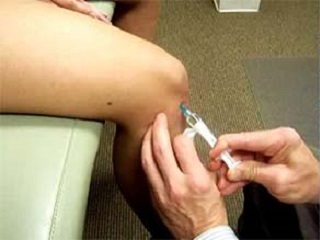
Chondroprotectors are used to restore cartilage tissue and improve joint mobility. The drugs stimulate the activity of chondrocytes - chondrocytes and help tissue to regenerate. Intra-articular insertion of headgear has a good effect. In recent years, a new, effective hyaluronic acid-based product has emerged. As a result, this medicine is called a "liquid prosthesis. "Once injected into a patient’s joint, this drug forms a protective film on the damaged cartilage and gradually restores the joint’s normal lubrication characteristics.
Muscle relaxants are used to relieve muscle cramps, in addition to the relaxing effect, they have a positive effect on the blood circulation of the affected joint.
Manual and physical therapy are widely used as non-drug methods of treating gonarthrosis. The most important are magnetotherapy, acupuncture, electrophoresis and massage, device traction (joint extension) and others. Recently, methods such as laser therapy, cryotherapy (exposure to liquid nitrogen) have been introduced to treat arthrosis. Along with physiotherapy, gymnastics for knee arthrosis also has a good effect. Lfk is the application of various physical exercises for therapeutic purposes.
Exercise for knee arthrosis
At the onset of the disease, physical activity at the patient's joint should be minimized. You should not jog, jump, lift weights, walk fast, squat. The practice of arthritis of the knee joint should be performed only after medical treatment, under the supervision of your doctor.
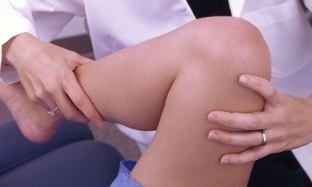
Exercises should be chosen that help strengthen the muscles and ligaments of the affected knee joint, while not leading to excessive mobility in the joint. That is, the exercises should have minimal dynamic activity. Useful exercises to stretch the ligaments and joint capsules. The rules are the same, the exercises are performed gently, without any effort.
It's important to follow a few rules when practicing any tournament:
- Don't exercise over pain
- If the exercise causes pain, it should be replaced with another gentler one.
Arthritis of the knee massage has a beneficial effect in restoring the functions of the knee joint. At the site of exposure, blood vessels dilate, blood circulation improves and metabolism is accelerated. Massage procedures improve lymph flow and this helps eliminate residual inflammation. Massage strengthens the muscular system, increases the flow of oxygen in them, improves gas exchange, normalizes their tone and increases plasticity.
Diet for Knee Inflammation
Recently, doctors have found that there is no direct link between the incidence of gonarthrosis and diet. It is an indisputable fact that the development of arthrosis is greatly influenced by the presence of overweight in a person. If the cause of the disease was precisely overweight, it is clear that the diet for arthrosis of the knee joint should be aimed at a gradual decrease in body weight. To do this, you need to change your diet and change your diet. Foods should be lower in calories, fried foods and high-fat foods should be excluded from the diet. Eat more vegetables, fruits and fluids.
Prevention of knee arthrosis
In order for your joints to stay healthy for as long as possible, you need to do regular exercise and exercise, but you shouldn’t get too caught up in this so that it doesn’t lead to joint overload. Swimming provides the best effect and minimal stress on the joints. If you are involved in professional sports, common protection should apply. It is useful to replace physical activity with rest, you should not stay still for long.
Following all these simple rules, as well as a healthy lifestyle and proper nutrition, will not allow arthrosis of the knee joint to ruin anyone’s life.





































